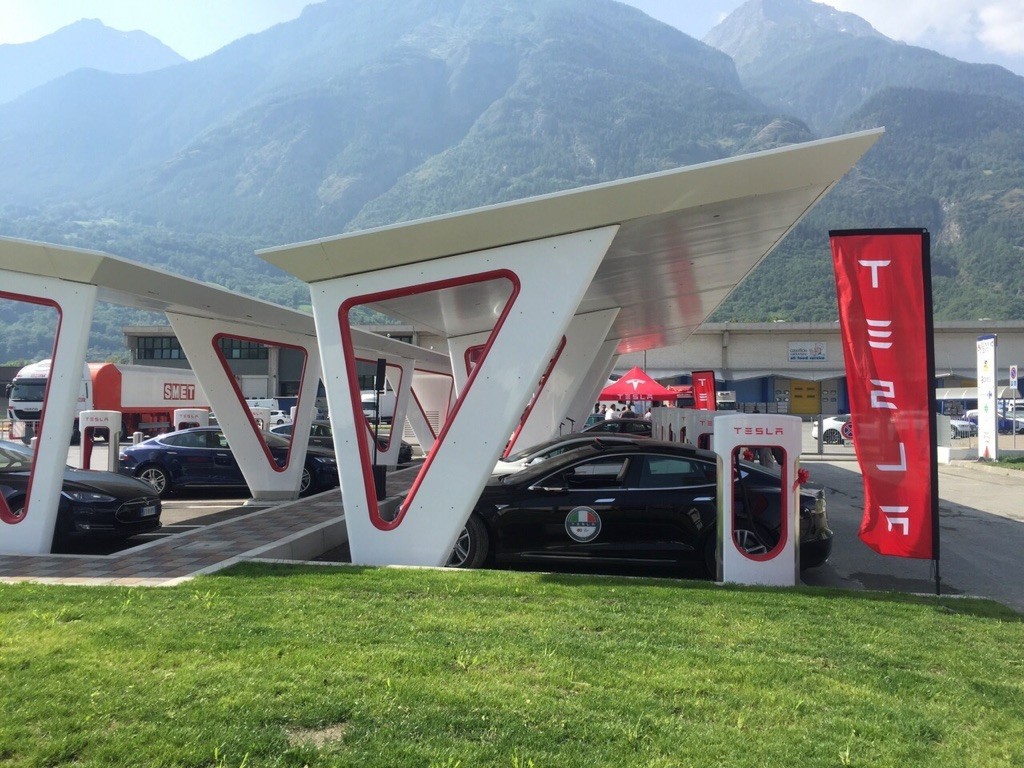Energy
Tesla’s value is based on a vision of a better tomorrow
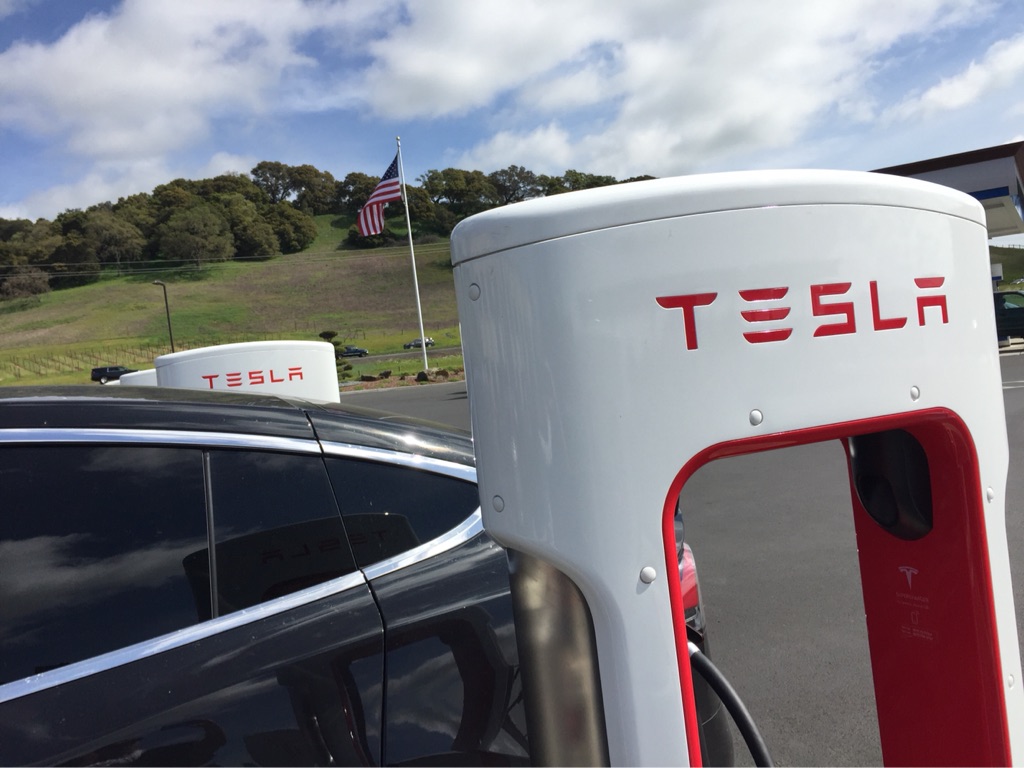
On Monday, April 10, 2017, Tesla, Inc. (NASDAQ: TSLA) shares closed at $312.39, surpassing the stalwart General Motors Corporation (NYSE: GM) by market cap. This was a revolutionary day in the world of U.S. automakers, coming just a week after Tesla exceeded the century-old, reliable Ford Motor Company (NYSE: F) in value.
Tesla lost $773 million last year. Traditional U.S. automakers are financially healthy and consistently sell the vehicles they manufacture. Tesla CEO Elon Musk has acknowledged on Twitter that the company was “absurdly overvalued if based on the past.” So, what is the “past” in the world of automakers, and why is Tesla, a company that sells millions of vehicles less than other major U.S. automakers, surging ahead?
The answer lies in Tesla’s ability to identify that — contrary to prevailing political discourse about the need for coal, oil and natural gas industries — more and more people are ready to make the switch to electric vehicles. And Tesla has built its company assets around that vision for a better, more sustainable world that no longer relies on fossil fuels for transportation and energy.
Tesla stock is not based on the past
A stock is a “concrete representation of partial ownership of a publicly traded company,” according to Motley Fool. A share in a stock represents the company’s big picture of revenue, earnings, cash flow, and shareholder’s equity, among other factors. Okay, Tesla’s Gigafactories outside Reno and in Buffalo have tangible book value with equipment, buildings, and land. But that’s not enough for the recent exceptional Tesla valuation. Tesla’s price-to-earning ratio, or how long a stock will take to pay back an investment, is quite uncertain.
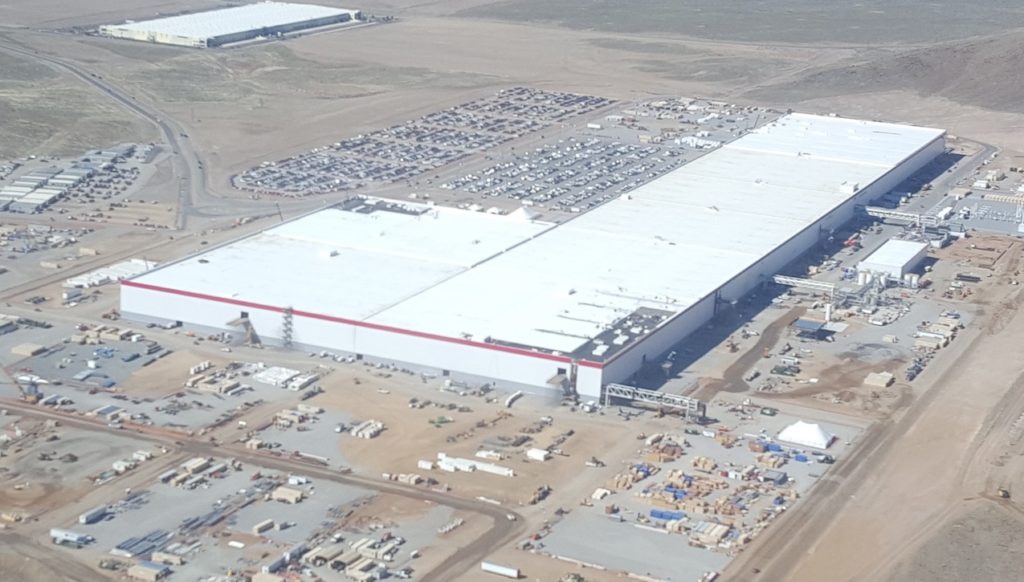
New aerial shots of Tesla Gigagafactory 1 taken March, 2017
The company’s value seems to be hinged on a non-traditional investment perspective that Ford and GM are falling fast. It’s a result of a common fear that their vehicle sales have hit their peak, that their once-stellar levels of production and return will never again be achieved. Moreover, Tesla benefits from a historical growth rate of the company’s earnings.
In other words, Tesla stock has soared in the past three years, up nearly 40 percent this year alone. Tesla, as Musk noted on Twitter, is all about “risk adjusted future cash flows.”
Electricity is our friend, and Tesla knows it
Electric vehicles offer many positive benefits as we attempt to alleviate the effects of global warming. They produce fewer greenhouse gasses when powered by plants that don’t produce greenhouse gasses. Better yet, EVs can be powered by decentralized power sources like the Tesla Powerwall for residences or the Tesla Powerpack for business energy independence or as a companion to existing utility power generation. A cleaner electric grid can contribute other environmental advantages like decreased consumption of water and less depletion of natural resources like steel and copper materials.
Electric vehicles are shaking up long-established industries at a much faster rate than anyone anticipated. Electricity mixes in North America are increasingly moving away from fossil fuel reliance and onto hydro and other renewable energies. We’re using energy more wisely with electric vehicles. There’s a significant reduction in the CO2 equivalent emissions from swapping a fossil-fuel powered car for an EV. Transport emissions comprise a statistically significant portion of the emissions that have contributed to anthropogenic climate change.
The folks at Tesla have been aware of the benefits of electricity-based transportation since the company’s inception.
U.S. automakers lag behind in alternative energy technology applications
Instead of moving toward technological innovations that could revolutionize the U.S. auto industry, the Big Three automakers lobbied the new Trump administration to reduce Corporate Average Fuel Economy targets of 50 miles per gallon by 2025. The move sent a stark message to a consumer base that is ready for a safe, reliable, fossil-free transportation future. Allegiances with the Trump administration sent signals that U.S. automakers are not ready with the necessary R&D to provide energy efficiency, alternative power, or autonomous driving.
Meanwhile, every Tesla comes standard with adapters to plug into common household outlets. The company states that a Tesla owner can charge up to 52 miles of range per hour right from home by plugging in the Tesla “like a mobile phone.” Tesla supercharger stations are strategically placed to minimize stops during long distance travel. Conveniently located near restaurants, shopping centers, and WiFi hot spots, the company says that each station contains multiple Superchargers to help Tesla drivers get back on the road quickly.
As we wrote here at Teslarati after the U.S. presidential election in November, over the past 50 years, automobiles have been our freedom machines, a means of both transportation and personal identity expression. In the same way that Henry Ford matched a youthful and euphoric generation to the combustion-engine automobile, so, too, do automakers need to design strategic moves to shape the industry’s evolution. Electric vehicles are at the heart of that vision for tomorrow’s consumer domestic transportation.
Tesla stock is valued, not by traditional measures, but by a vision that appeals to a generation of individuals who believe we can achieve a sustainable world. And we hold to that belief by investing in a stock like Tesla, which gives us hope against extraordinary odds.

Energy
Tesla lands in Texas for latest Megapack production facility
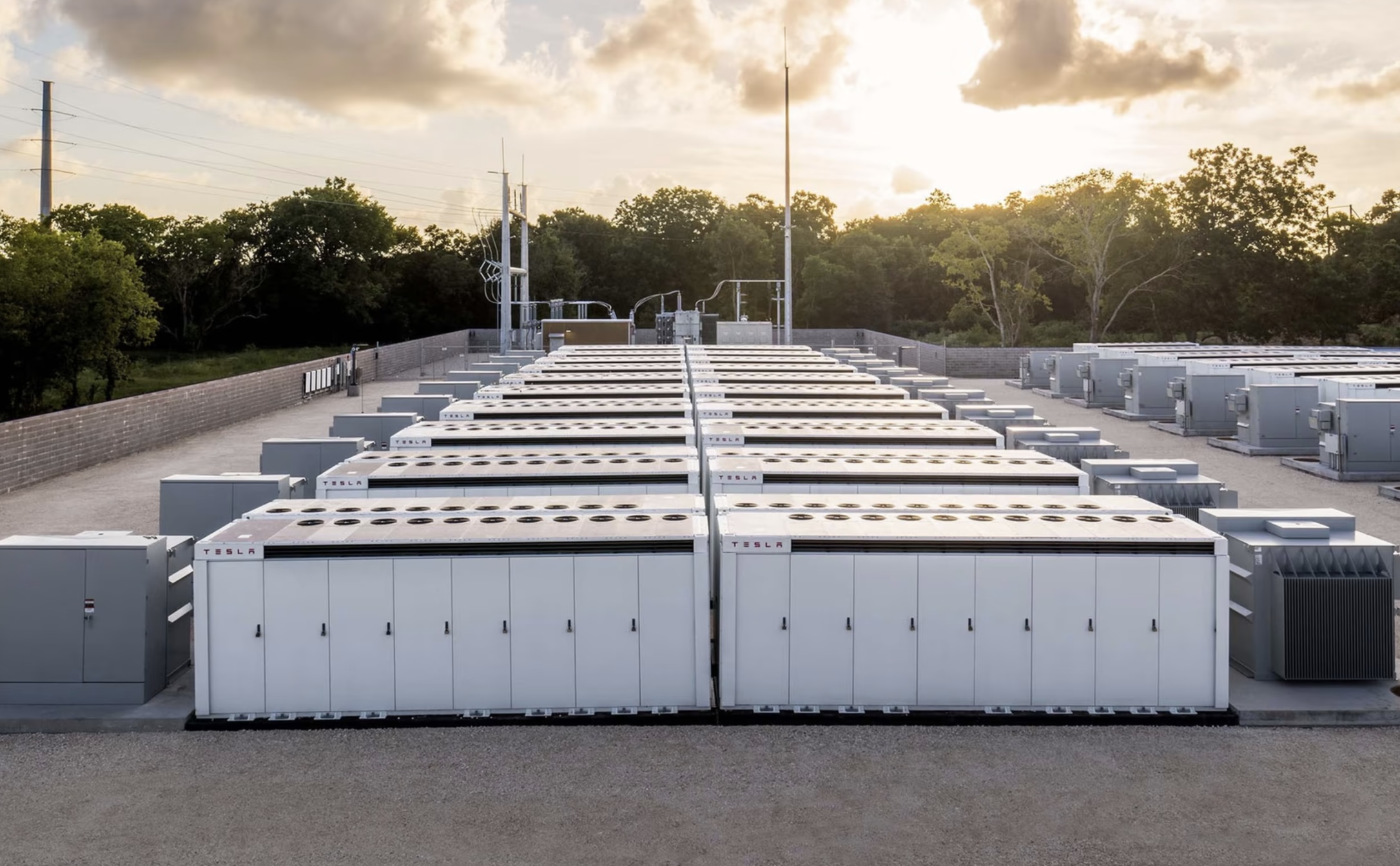
Tesla has chosen the location of its latest manufacturing project, a facility that will churn out the Megapack, a large-scale energy storage system for solar energy projects. It has chosen Waller County, Texas, as the location of the new plant, according to a Commissioners Court meeting that occurred on Wednesday, March 5.
Around midday, members of the Waller County Commissioners Court approved a tax abatement agreement that will bring Tesla to its area, along with an estimated 1,500 jobs. The plant will be located at the Empire West Industrial Park in the Brookshire part of town.
Brookshire also plans to consider a tax abatement for Tesla at its meeting next Thursday.
The project will see a one million square-foot building make way for Tesla to build Megapack battery storage units, according to Covering Katy News, which first reported on the company’s intention to build a plant for its energy product.
CEO Elon Musk confirmed on the company’s Q4 2024 Earnings Call in late January that it had officially started building its third Megapack plant, but did not disclose any location:
“So, we have our second factory, which is in Shanghai, that’s starting operation, and we’re building a third factory. So, we’re trying to ramp output of the stationary battery storage as quickly as possible.”
Tesla plans third Megafactory after breaking energy records in 2024
The Megapack has been a high-demand item as more energy storage projects have started developing. Across the globe, regions are looking for ways to avert the loss of power in the event of a natural disaster or simple power outage.
This is where Megapack comes in, as it stores energy and keeps the lights on when the main grid is unable to provide electricity.
Vince Yokom of the Waller County Economic Development Partnership, commented on Tesla’s planned Megapack facility:
“I want to thank Tesla for investing in Waller County and Brookshire. This will be a state-of-the-art manufacturing facility for their Megapack product. It is a powerful battery unit that provides energy storage and support to help stabilize the grid and prevent outages.”
Tesla has had a lease on the building where it will manufacture the Megapacks since October 2021. However, it was occupied by a third-party logistics company that handled the company’s car parts.
Energy
Tesla Energy had a blockbuster 2024

Tesla Energy has become the undisputed dark horse of the electric vehicle maker. This was highlighted by Tesla Energy’s growing role in the company’s overall operations in the past quarters.
And as per Tesla’s year-end milestone posts on X, Tesla Energy had a blockbuster 2024.
Tesla Energy’s 2024 milestones:
- As per Tesla on its official social media account on X, the company has hit over 800,000 Powerwalls installed worldwide.
- From this number, over 100,000 Powerwall batteries have been enrolled in virtual power plant (VPP) programs.
- The Powerwall 3 has officially been launched in the United States, Canada, Puerto Rico, the U.K., Germany, Italy, Australia, and New Zealand.
- The Tesla Megapack hit over 22 GWh in operation across more than 60 countries across the globe.
- The Lathrop Megafactory, which produces the Megapack, has been ramped to 40 GWh per year.
- The Lathrop Megafactory has also produced its 10,000th Megapack battery.
- The Shanghai Megafactory was completed in just seven months, and it is ready to start Megapack production in Q1 2025.
Hit 800k Powerwalls installed worldwide
— Tesla (@Tesla) December 31, 2024
Also:
– Over 100k Powerwalls are now enrolled in VPP programs
– Launched Powerwall 3 in the US, Canada, Puerto Rico, UK, Germany, Italy, Australia & New Zealand
– Megapack hit 22+ GWh in operation across 60+ countries
– Ramped… pic.twitter.com/bE88DpeyTg
Powerwall owners’ 2024 impact:
- As per Tesla Energy, Powerwall owners generated a total of 4.5 TWh of solar energy globally in 2024. This was equivalent to powering a Model 3 for more than 17 billion miles.
- A total of 1.1 TWh of energy was stored in Powerwalls in 2024. This protected homes from over 5.8 million outages during the year.
- Tesla’s Storm Watch feature for Powerwall batteries covered 2.8 million severe weather events over the year.
- Powerwall owners saw collective savings of over $800 million on utility bills.
- Virtual Power Plants contributed over 2.2 GWh of power to the grid. This reduced the need for 2,200 metric tons of fossil fuel peaker plant emissions.


Don’t hesitate to contact us with news tips. Just send a message to simon@teslarati.com to give us a heads up.
Energy
Utah’s rPlus Energies breaks ground on Tesla Megapack battery system
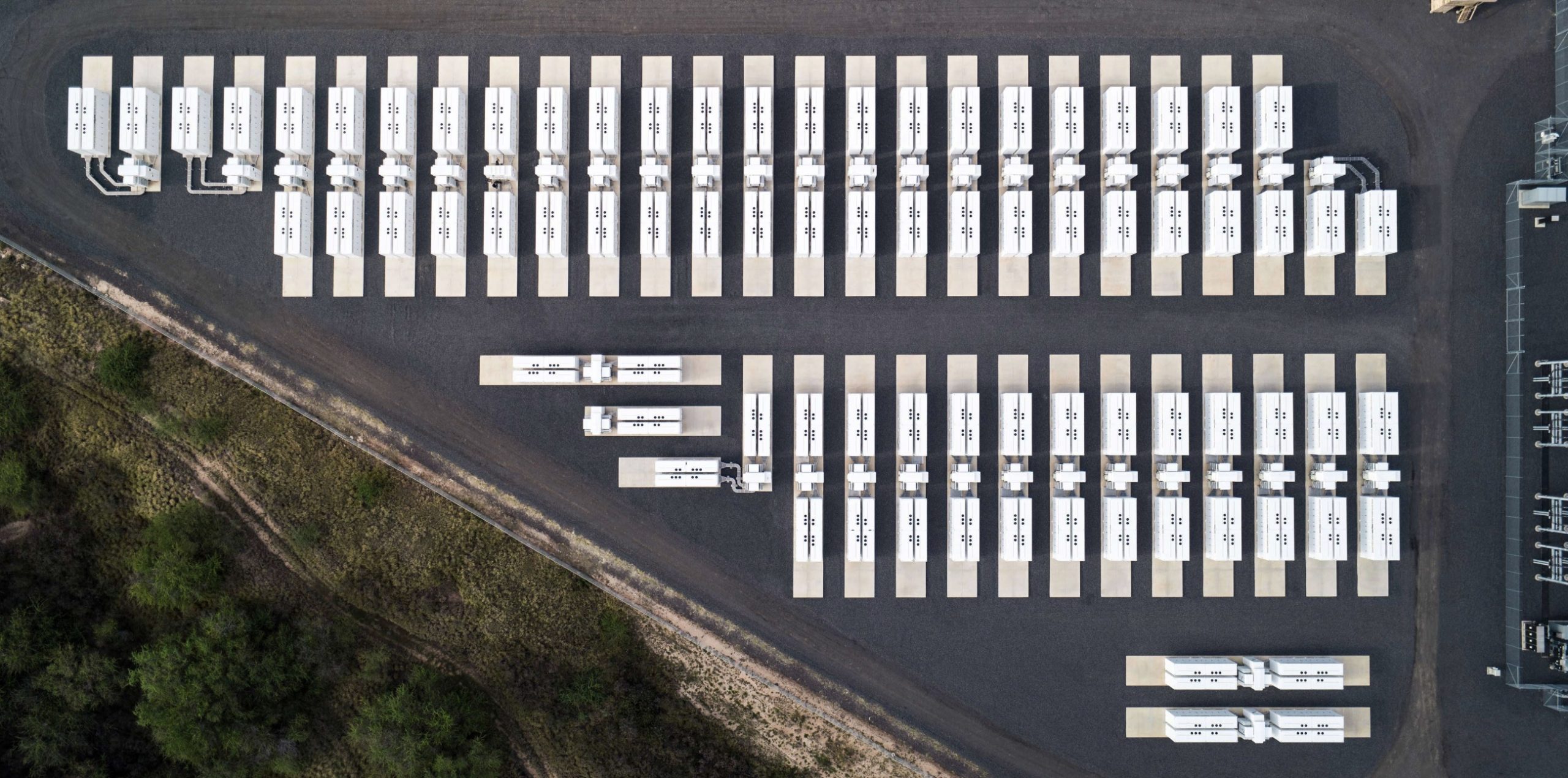
Utah-based rPlus Energies recently held the groundbreaking ceremony for the Green River Energy Center, a 400 MW solar PV and 400 MW/1,600 MWh battery storage project in Eastern Utah. Tesla Megapacks will be used as the upcoming facility’s battery storage solution.
At 400 MW/1,600 MWh, the Green River Energy Center is expected to become one of the largest solar-plus-storage projects under development in the United States. Once operational, the facility would supply power to PacifiCorp under a power purchase agreement, as noted in a press release.
Utah Gov. Spencer Cox shared his excitement for the project during the Green River Energy Center’s groundbreaking event. As per the Utah Governor, the solar and battery storage system represents a notable step forward for the state’s sustainable energy efforts.
NEWS: rPlus Energy has just broken ground on a new $362 million @Tesla Megapack battery energy storage system in Utah.
This 400 MW solar PV and 400 MW/1,600 MWh battery storage project is one of the largest solar-plus-storage projects under construction in the nation. The entire… pic.twitter.com/ubPOUnPWEf— Sawyer Merritt (@SawyerMerritt) September 24, 2024
“This project is being built in rural Utah, by rural Utahns, and for all of Utah. When rural Utah thrives, the entire state prospers. Today, we’re not just breaking ground—we’re building a future of affordable, abundant energy in Utah,” the official noted.
The Green River Energy Center secured over $1 billion in construction debt financing earlier this year. The facility is also expected to create about 500 jobs, many of which will be filled by local workers. With this in mind, the solar and battery farm would likely prove to be a boost to Emery County’s economy, enhancing tax revenue, strengthening public services, and offering long-term employment opportunities for the area’s residents.
Sundt Construction will serve as the project’s contractor, EliTe Solar will supply the solar modules, and Tesla will provide the battery storage system for the project. Luigi Resta, President and CEO of rPlus Energies, noted that the Green River Energy Center is special because of the entities that have worked together to make the facility a reality.
“It’s the partners that make this project special, that have made this monumental project possible. From our equipment providers to the onsite talent, and the support of the local and regional community, we owe this project’s success to each of you,” he stated.
Don’t hesitate to contact us with news tips. Just send a message to simon@teslarati.com to give us a heads up.
-

 News2 weeks ago
News2 weeks agoTesla aiming to produce first “legion” of Optimus robots this 2025
-
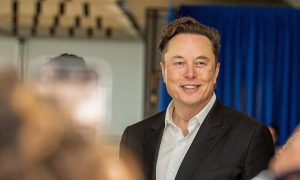
 Elon Musk1 week ago
Elon Musk1 week agoTesla CEO Elon Musk’s simple message to vandals
-
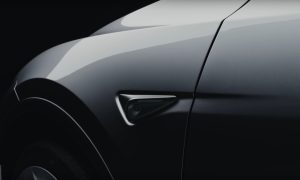
 Elon Musk2 weeks ago
Elon Musk2 weeks agoElon Musk confirms two measures Tesla is taking to fight vandalism
-
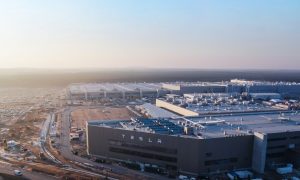
 News1 week ago
News1 week agoTesla’s Giga Berlin director responds to anti-Musk criticism
-
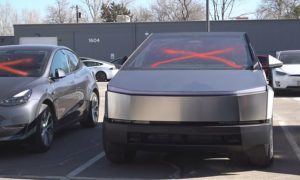
 Elon Musk2 weeks ago
Elon Musk2 weeks agoTesla owners doxxed by controversial anti-DOGE website in clear intimidation tactic
-

 Elon Musk2 weeks ago
Elon Musk2 weeks agoElon Musk to file lawsuit against former US Rep Jamaal Bowman: “I’ve had enough”
-
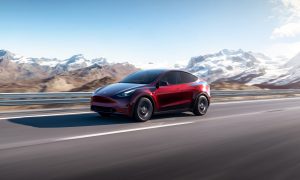
 News1 week ago
News1 week agoTesla Model Y inventory is going fast, selling out in many U.S. states
-
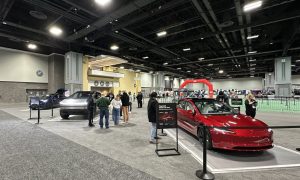
 Elon Musk2 weeks ago
Elon Musk2 weeks agoTesla kicked from popular auto show as event succumbs to protest pressure
